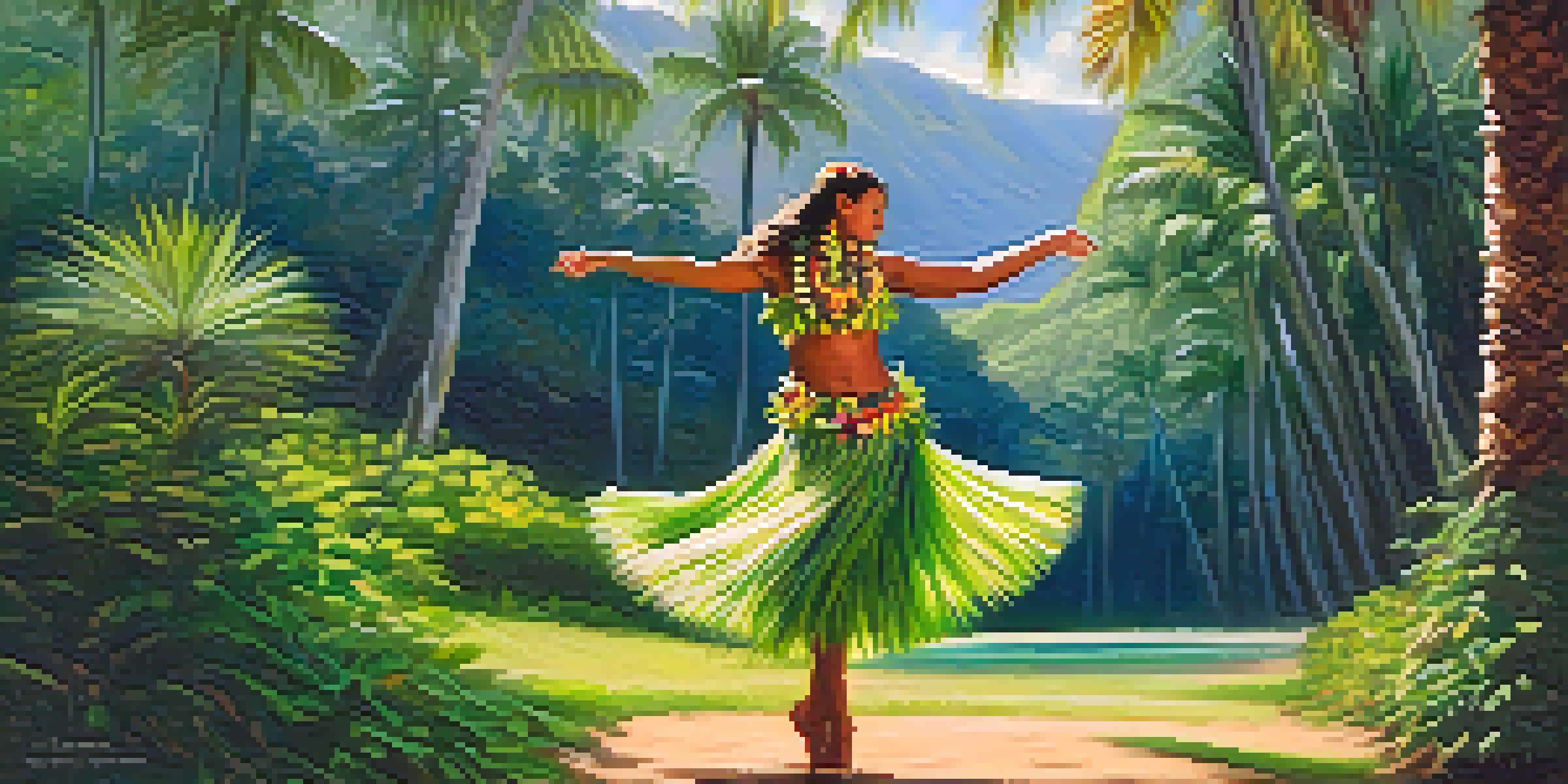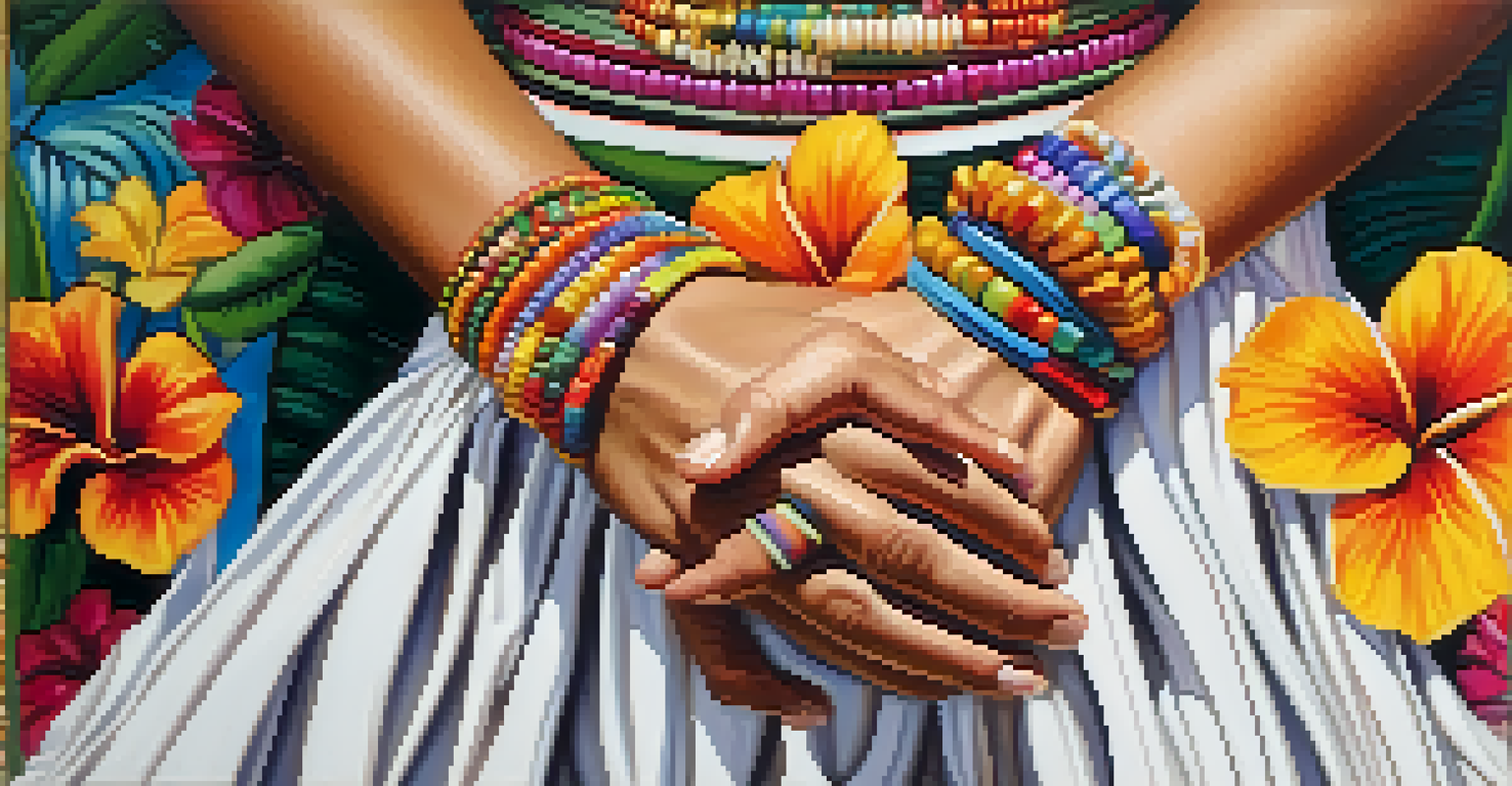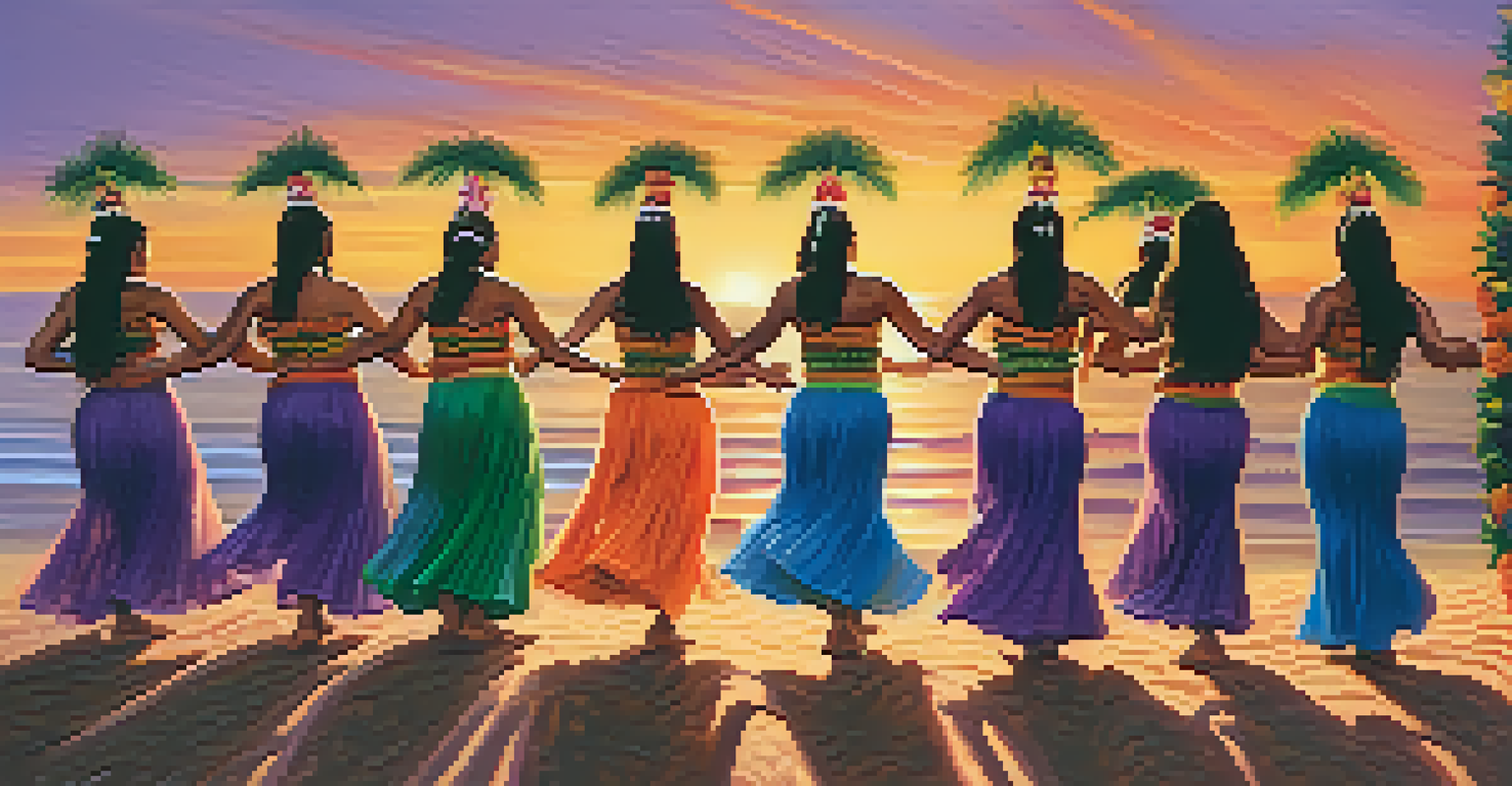The Therapeutic Aspects of Hula Dance in Hawaiian Traditions

Understanding Hula: More Than Just a Dance
Hula is often seen as a vibrant dance form, but it embodies much more than just movements. It is a storytelling medium that conveys Hawaiian culture, history, and spirituality. Each gesture and chant serves to connect practitioners to their ancestors and the natural world, making it a deeply immersive experience.
Hula is a way of life; it is a connection to the past, a celebration of the present, and a hope for the future.
Through rhythm and expression, hula allows individuals to express emotions and stories that might be hard to verbalize. This connection to heritage fosters a sense of belonging and identity, which can be incredibly healing for many. The dance becomes a vehicle for sharing both joy and sorrow, helping individuals process their feelings.
Moreover, hula is a communal activity that encourages social bonding. Participants often feel a strong sense of unity and support, which can alleviate feelings of isolation. This aspect of hula is particularly significant in Hawaiian culture, where community plays a vital role in individual well-being.
The Physical Benefits of Hula Dance
Engaging in hula dance provides numerous physical benefits that contribute to overall health. The movements promote flexibility, balance, and strength, offering a low-impact workout that can be enjoyed by people of all ages. As dancers sway and step, they strengthen their muscles and improve cardiovascular health.

In addition to physical fitness, hula enhances body awareness. Dancers learn to connect their movements with breath and rhythm, fostering a greater understanding of their bodies. This mindful movement can lead to improved coordination and posture, as well as a deeper appreciation for one’s physical abilities.
Hula as a Cultural Storytelling Art
Hula transcends dance by serving as a medium to convey Hawaiian culture, history, and emotions through movement and chant.
The repetitive nature of hula movements can also have a meditative effect. As practitioners focus on their motions and the accompanying chants, they often enter a state of flow, which can reduce stress and promote relaxation. This combination of physical activity and mindfulness creates a holistic approach to well-being.
Emotional Healing Through Hula Dance
Hula dance serves as a powerful outlet for emotional expression and healing. The dance allows practitioners to channel their feelings into movement, acting as a form of therapy. This practice can be especially beneficial for those dealing with grief, anxiety, or trauma, as it offers a safe space to explore and release emotions.
Dance is the hidden language of the soul.
The storytelling aspect of hula also plays a crucial role in emotional healing. By sharing stories through dance, individuals can reflect on their experiences and find catharsis in the process. This narrative element provides a framework for understanding and processing complex emotions, fostering a deeper connection to oneself.
Furthermore, the supportive community surrounding hula dance can enhance emotional resilience. Participants often find comfort in knowing they are not alone in their struggles, as shared experiences create a sense of solidarity. This communal support is vital for emotional healing, as it reminds individuals that they are part of something larger.
The Spiritual Connection of Hula Dance
In Hawaiian tradition, hula is not only a dance but a spiritual practice that connects practitioners to their ancestors and the land. Each movement and chant is infused with meaning, allowing dancers to honor their heritage and the natural environment. This spiritual aspect fosters a deep sense of belonging and purpose.
The rituals involved in hula, such as blessings and offerings, further enhance this spiritual connection. Participants engage in practices that honor the gods, nature, and their ancestors, creating a sacred atmosphere. This spiritual engagement can lead to profound personal insights and a greater appreciation for life.
Physical and Emotional Benefits
Engaging in hula promotes physical fitness while also providing a therapeutic outlet for emotional expression and healing.
Moreover, many practitioners report feeling a spiritual awakening through hula. The dance becomes a path to self-discovery and enlightenment, as it encourages individuals to reflect on their values and beliefs. This journey can lead to a more fulfilling life, guided by the wisdom of Hawaiian traditions.
Cultural Preservation Through Hula Dance
Hula dance plays a vital role in preserving Hawaiian culture and traditions. As a dynamic art form, it passes down stories, values, and practices from generation to generation. This act of preservation is essential for maintaining cultural identity, especially in a rapidly changing world.
Participating in hula fosters a deep appreciation for Hawaiian history and language. Dancers learn not only the movements but also the meanings behind the chants, enriching their understanding of cultural heritage. This connection to the past empowers individuals and communities to celebrate their roots.
By engaging in hula, individuals contribute to the ongoing legacy of Hawaiian traditions. They become stewards of the culture, ensuring that its richness is not lost to time. This commitment to cultural preservation is not only beneficial for individuals but for the entire community, reinforcing pride and unity.
Hula Dance as a Tool for Community Building
Hula dance acts as a catalyst for community building, bringing people together through shared experiences. Dance classes and performances create opportunities for social interaction, fostering friendships and connections. This communal aspect is vital for cultivating a sense of belonging and support among participants.
Moreover, hula events often celebrate cultural milestones and rituals, strengthening community ties. These gatherings allow individuals to come together to honor their heritage, creating a collective bond. Such shared experiences can enhance community resilience, particularly in times of struggle.
Community and Spiritual Connection
Hula fosters a strong sense of community and spiritual connection, bringing individuals together to honor their heritage and support one another.
Additionally, hula dance promotes inclusivity, welcoming individuals from diverse backgrounds. This openness allows for the exchange of stories, experiences, and perspectives, enriching the community as a whole. By embracing diversity, hula helps create a vibrant, interconnected community that thrives together.
The Future of Hula Dance and Its Therapeutic Role
As awareness of the therapeutic benefits of hula dance grows, its popularity continues to rise. More people are recognizing the physical, emotional, and spiritual advantages of this traditional practice. This increased interest is leading to more opportunities for individuals to engage with hula in various settings, from classes to workshops.
The future of hula dance also involves integrating modern therapeutic approaches with traditional practices. Health professionals are beginning to explore the potential of hula as a complementary therapy for conditions such as PTSD, depression, and chronic pain. This blending of old and new can enhance the healing journey for many individuals.

Ultimately, the enduring legacy of hula dance lies in its ability to adapt while remaining true to its roots. As more people embrace its therapeutic aspects, hula will continue to inspire and heal, ensuring that its cultural significance endures for generations to come.